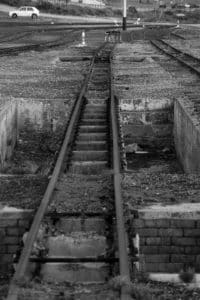Introduction to the Liganga railway and its significance
Nestled in the heart of Tanzania, the Liganga railway project held the promise of revolutionizing the country’s iron industry. This ambitious endeavor, conceived decades ago, was envisioned to be the catalyst that would propel Tanzania’s economic growth and position it as a major player in the global steel market. However, the Liganga railway’s journey has been fraught with challenges, setbacks, and ultimately, a defunct status that has left its mark on the nation’s industrial landscape.
In this article, we will delve into the history, challenges, and the untapped potential of the Liganga railway, exploring how its fate has shaped Tanzania’s iron industry and the lessons that can be drawn from this remarkable story.
The history of the Liganga railway project
The Liganga railway project dates back to the 1980s, when the Tanzanian government recognized the vast iron ore deposits in the Liganga region. Recognizing the potential to transform the country’s industrial landscape, the government embarked on an ambitious plan to develop a railway that would connect the iron ore mines to the port city of Dar es Salaam, facilitating the export of Tanzania’s mineral wealth.
The project gained momentum in the 1990s, with feasibility studies and initial construction work commencing. The vision was to establish a modern, efficient railway system that would not only transport iron ore but also serve as a vital link for other goods and resources, connecting the resource-rich hinterland to the country’s economic centers.
Challenges faced in the construction and operation of the Liganga railway

However, the Liganga railway project was beset by a myriad of challenges from the outset. Funding constraints, logistical hurdles, and political complexities all contributed to the project’s slow progress and eventual stagnation.
One of the primary obstacles was the sheer scale and complexity of the undertaking. Building a railway through rugged terrain, navigating environmental concerns, and coordinating the various stakeholders involved proved to be a daunting task. Securing the necessary funding from both domestic and international sources also proved to be a persistent challenge, as the project’s high initial investment and long-term viability were viewed with caution by potential investors.
Furthermore, the project faced political headwinds, with changes in government priorities and shifting policy landscapes adding to the uncertainty surrounding the Liganga railway’s future.
The potential impact of the Liganga railway on Tanzania’s iron industry
Despite the challenges, the Liganga railway project held immense potential for Tanzania’s iron industry. The railway was envisioned to provide a reliable and efficient means of transporting iron ore from the Liganga region to the country’s main ports, enabling the export of this valuable resource to global markets.
The development of the Liganga railway would have had a cascading effect on the entire iron and steel value chain in Tanzania. It would have facilitated the establishment of processing facilities, such as smelters and steel mills, in close proximity to the iron ore deposits, creating a thriving industrial hub and generating thousands of jobs.
Moreover, the availability of a reliable transportation network would have attracted foreign investment and expertise, further bolstering Tanzania’s ability to capitalize on its mineral wealth and position itself as a significant player in the global iron and steel industry.
Reasons for the defunct status of the Liganga railway
Sadly, the Liganga railway project never reached its full potential. Despite the initial enthusiasm and the recognition of its strategic importance, the project ultimately fell into a state of disrepair and abandonment.
Several factors contributed to the railway’s defunct status:
- Persistent funding challenges: The project’s high initial investment and the lack of sustained funding from both the Tanzanian government and international sources ultimately led to the stagnation of construction and the inability to complete the railway network.
- Shifting political priorities: Changes in government leadership and policy directions over the years resulted in a waning of political will and support for the Liganga railway project, as other development priorities took precedence.
- Logistical and operational complexities: The inherent challenges of constructing and operating a railway in the rugged terrain of the Liganga region proved to be too daunting, with issues such as maintenance, security, and efficient management contributing to the project’s downfall.
- Lack of a comprehensive strategy: The absence of a well-defined and holistic plan for the Liganga railway, including its integration with the broader industrial and transportation strategies, hindered its long-term viability and sustainability.
Lessons learned from the Liganga railway project
The Liganga railway project’s demise offers valuable lessons for Tanzania and other developing nations seeking to harness their mineral wealth and drive industrial growth:
- Importance of long-term planning and strategic vision: The Liganga railway project lacked a comprehensive, long-term strategy that could have guided its development and ensured its alignment with the country’s broader industrial and economic goals.
- Securing sustainable funding and investment: The project’s reliance on limited and intermittent funding sources proved to be its Achilles’ heel. Securing a diverse and reliable stream of financial resources, both from domestic and international sources, is crucial for the successful implementation of such large-scale infrastructure projects.
- Fostering political will and commitment: The Liganga railway project’s fate was heavily influenced by shifting political priorities and waning support from successive governments. Maintaining a consistent and unwavering political commitment is essential for the successful execution of transformative projects.
- Emphasis on project management and operational efficiency: The inherent complexities of constructing and operating the Liganga railway highlighted the need for robust project management practices, effective risk mitigation strategies, and a focus on operational efficiency to ensure the project’s long-term viability.
The current state of Tanzania’s iron industry

Despite the defunct status of the Liganga railway, Tanzania’s iron industry continues to hold significant potential. The country is endowed with substantial iron ore deposits, and efforts are underway to explore alternative means of harnessing this mineral wealth.
In recent years, the Tanzanian government has renewed its focus on developing the iron and steel sector, recognizing its importance in driving industrialization and economic growth. Initiatives such as the establishment of the Tanzania Minerals Beneficiation Corporation (TMBC) and the promotion of public-private partnerships have aimed to revitalize the industry and attract investment.
However, the absence of a reliable transportation network, such as the Liganga railway, has hindered the industry’s full-scale development. The reliance on road transportation for the movement of iron ore and other minerals has proven to be less efficient and more costly, limiting the industry’s competitiveness in the global market.
Future prospects for revitalizing the Liganga railway
As Tanzania looks to the future, the revival of the Liganga railway project remains a critical priority. Recognizing the strategic importance of this infrastructure, the government has expressed its commitment to exploring options for its resuscitation.
Potential avenues for revitalizing the Liganga railway include:
- Securing new sources of funding: Exploring innovative financing models, such as public-private partnerships, to attract the necessary investments required to complete the railway’s construction and ensure its long-term sustainability.
- Fostering international collaboration: Engaging with global partners, including development agencies and multinational corporations, to leverage their expertise, technology, and resources in reviving the Liganga railway project.
- Integrating the railway into a comprehensive industrial strategy: Aligning the Liganga railway’s development with a broader, holistic plan for Tanzania’s industrial growth, ensuring its seamless integration with the country’s overall economic and infrastructure priorities.
- Enhancing project management and operational capabilities: Investing in the development of robust project management skills, as well as the implementation of best practices in railway operations and maintenance, to ensure the Liganga railway’s long-term viability.
Conclusion and final thoughts on the Liganga railway
The Liganga railway project’s journey has been a testament to the complexities and challenges that developing nations face in harnessing their mineral wealth and driving industrial growth. While the project’s defunct status is a sobering reminder of the obstacles that can impede such ambitious undertakings, it also underscores the immense potential that lies within Tanzania’s iron industry.
As the country moves forward, the revival of the Liganga railway project must be a top priority. By learning from the lessons of the past, securing the necessary funding and political commitment, and integrating the railway into a comprehensive industrial strategy, Tanzania can unlock the true potential of its iron ore resources and position itself as a major player in the global steel market.
The Liganga railway’s story is not one of defeat, but rather a call to action – a testament to the transformative power of infrastructure development and the unwavering determination required to drive economic progress. With a renewed focus and a steadfast commitment to its revival, the Liganga railway can once again become the catalyst that propels Tanzania’s iron industry towards a future of prosperity and growth.
For more articles related to Railway and train travel Tanzania, click here!

































